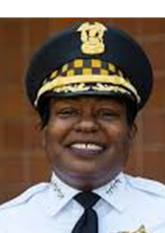6.1: NONVERBALS- Communicating without saying a word
- Page ID
- 152956
\( \newcommand{\vecs}[1]{\overset { \scriptstyle \rightharpoonup} {\mathbf{#1}} } \)
\( \newcommand{\vecd}[1]{\overset{-\!-\!\rightharpoonup}{\vphantom{a}\smash {#1}}} \)
\( \newcommand{\id}{\mathrm{id}}\) \( \newcommand{\Span}{\mathrm{span}}\)
( \newcommand{\kernel}{\mathrm{null}\,}\) \( \newcommand{\range}{\mathrm{range}\,}\)
\( \newcommand{\RealPart}{\mathrm{Re}}\) \( \newcommand{\ImaginaryPart}{\mathrm{Im}}\)
\( \newcommand{\Argument}{\mathrm{Arg}}\) \( \newcommand{\norm}[1]{\| #1 \|}\)
\( \newcommand{\inner}[2]{\langle #1, #2 \rangle}\)
\( \newcommand{\Span}{\mathrm{span}}\)
\( \newcommand{\id}{\mathrm{id}}\)
\( \newcommand{\Span}{\mathrm{span}}\)
\( \newcommand{\kernel}{\mathrm{null}\,}\)
\( \newcommand{\range}{\mathrm{range}\,}\)
\( \newcommand{\RealPart}{\mathrm{Re}}\)
\( \newcommand{\ImaginaryPart}{\mathrm{Im}}\)
\( \newcommand{\Argument}{\mathrm{Arg}}\)
\( \newcommand{\norm}[1]{\| #1 \|}\)
\( \newcommand{\inner}[2]{\langle #1, #2 \rangle}\)
\( \newcommand{\Span}{\mathrm{span}}\) \( \newcommand{\AA}{\unicode[.8,0]{x212B}}\)
\( \newcommand{\vectorA}[1]{\vec{#1}} % arrow\)
\( \newcommand{\vectorAt}[1]{\vec{\text{#1}}} % arrow\)
\( \newcommand{\vectorB}[1]{\overset { \scriptstyle \rightharpoonup} {\mathbf{#1}} } \)
\( \newcommand{\vectorC}[1]{\textbf{#1}} \)
\( \newcommand{\vectorD}[1]{\overrightarrow{#1}} \)
\( \newcommand{\vectorDt}[1]{\overrightarrow{\text{#1}}} \)
\( \newcommand{\vectE}[1]{\overset{-\!-\!\rightharpoonup}{\vphantom{a}\smash{\mathbf {#1}}}} \)
\( \newcommand{\vecs}[1]{\overset { \scriptstyle \rightharpoonup} {\mathbf{#1}} } \)
\( \newcommand{\vecd}[1]{\overset{-\!-\!\rightharpoonup}{\vphantom{a}\smash {#1}}} \)

The apparel oft proclaims the man. -- Shakespeare
A U.S. Supreme Court decision in 1966, Miranda v. Arizona, gave rise to the famous Miranda warning that includes the famous phrase, “Anything you say can be used against you in court.” Anyone who watches a televised crime show has heard that phrase. But the truth is, what you don’t say can be used against you or for you – and not just in a court of law, but anywhere.
Watch this clip from the 1970 movie “Patton.” If you know how to decode Army uniforms from the 1940s, you can learn a great deal about Patton the man before he ever opens his mouth. And you can learn even more once he does. We’ll unpack all that in a few minutes, but first watch this clip, which is based upon an actual speech Patton gave.
Patton Introduction Speech
Right off the bat, 43 seconds into the clip, you can see two rings and a riding crop as well as gloves. That tells us that Patton was a West Point graduate (all West Point graduates always wear their class rings!), that he was married, and that (plus the fact he’s wearing riding boots and has his pants bloused) tells us he was a cavalry officer. Until 1939, the U.S. Army still maintained and trained cavalry troops to go into battle, the way armies had fought for at least 4,000 years. The German invasion of Poland in 1939 changed that when the German Nazi army used a tactic known as Blitzkrieg, or “Lightning War,” to conquer the larger, but poorly equipped and thinly spread Polish army.
(An aside: To understand Patton, it helps to understand Blitzkrieg, so watch this short clip from Britain’s Imperial War Museums about how to pull off a Blitzkrieg war. More recently, Russian President Vladimir Putin thought he could pull off a Blitzkrieg attack on Ukraine, but his Russian Army was more like the Russian Army of World War I, so he reverted to World War I tactics).
Blitzkrieg Explained
Back to the Patton clip: At 47 seconds, you see a chest full of medals. Among the medals: A distinguished service cross, Army distinguished service medal, silver star, legion of merit, bronze star, and purple heart. You can also see a gold rope around his shoulder. At the time it was worn as part of a leader’s dress uniform.
So you can see in the first 49 seconds we already know a great deal about the man – he was married, he was a West Point graduate, he had been wounded in combat, he had been awarded medals for distinguished action in combat and he was a leader. At 51 seconds we get a look at his helmet, and we can see stars, which tells us he’s a general, something confirmed at 57 seconds when we see his belt. It’s a leather general’s belt with the War Department seal as the buckle. (Regular officers’ belts are web with a plain brass buckle.) We can also see “hashtags” on his sleeve, which tell us he’s been in the Army for 45 years.
At one minute we get a glimpse of his pistol, and we learn he’s a bit vain. That’s not a standard U.S. Army-issue .45 caliber pistol. The handles were made of ivory and had his initials. At 1:08 we see his helmet again. We can clearly see he is a four-star general, which means he commands an army. The red circle on his helmet tells us he commands the Third U.S. Army.
An army consists of four divisions with 90,000 troops and all the equipment and supplies needed to sustain itself in combat over a long period. Armies are commanded by four-star generals.
As you can see, just by looking at his clothing, you can learn a great deal about Patton or any soldier. The saying, “clothes makes the man” simply put means that people are judged based on the clothing they wear and are judged accordingly.
- Look at these people, and tell us based upon their clothes (1) what they are and (2) whether you respect or trust them.




(Photo credits: University of Maryland Medical School, Archdiocese of Washington, Prince George’s Community College, Prince George’s Community College)
Nonverbal skills are essential for success in business. In one study, employers said the most important communication skills in a business environment were listening, nonverbal, writing, and oral communication skills (Lear, Hodge & Schulz, 2015). Nonverbal communication is primarily about impression management. It’s about reflecting and shaping relationships, and about conveying emotions.
If you watched The Apprentice during the early 2000s, Donald Trump played the role of a hard-nosed boss. From that, and his performance as President of the United States, you might gather the impression that successful people must be “tough,” willing to do anything to get the job done. But that simply is not so. The United States Military Academy at West Point is the nation’s No. 1 leadership training institution, and the Cadet Honor Code there is very simple: “I will not lie, cheat nor steal, nor tolerate those who do.”
- Read more about the West Point Honor Code here and compare it to your college’s code of academic integrity. What are the similarities? What are the differences? Do you believe either is too strict? Write a 450-500 word paper discussing these points. If a face-to-face student, be prepared to discuss the differences in class.
Nonverbal communication also occurs in mediated messages. We all (well, almost all of us) use emoticons and emojis. But we can also use punctuation, as I just did when I wrote “well,”. The comma signaled a pause, even a sigh.
Time Management
I could write an entire book about time management, and plenty of people have. In fact, a search on Amazon.com shows more than 60,000 books on time management are in print (including audiobooks). The important thing for you to understand in this course is that how you use time can reflect two things: First, your concern for the other person, and second your culture.
If we say we are going to be someplace at a certain time and we’re not, the other person might get upset. They might even think it’s because you don’t respect them. If you’re going out for a date and are late, what do you think the other person might conclude? Even worse, if you’re late for a job interview, what do you think the potential employer might conclude?
Years ago, when I was dating, I told my wife that I would meet her “under the big sign” in New York’s Penn Station. I was thinking of the one on the main level, the same level where you could buy your tickets, coffee, etc. But when she heard “under the big sign,” she thought of the big sign one level down in the Long Island Rail Road area of the station – an area which I never walked through, but did walk by occasionally. We both waited about an hour and got both pretty angry and pretty hurt. Was this how this person we thought we were in love with would dump us? We did meet up as we were storming out of the station. To this very day, we laugh about the misunderstanding.

Time can be a matter of status. If you’re applying for a job and late, the interviewer most likely will consider it a sign that you’re not interested, or, even worse, that you’ll be late on the job. But if you are a hiring manager and you’re late for an interview, after saying you were delayed by a meeting that ran late, your interviewee is expected to simply accept it.
Culture
It can also be a matter of culture. In Western European countries, as well as in many of their former colonies including the U.S., Canada, Australia, and New Zealand, being on time is part of the culture. But in other countries, principally those from Africa, Latin America, and Asia time is not so important and it’s okay to be late. Those countries where it’s important to be on time are called individualistic cultures and those countries where it’s okay to be late are called collectivistic cultures. In an individualistic culture, the individual is king, whereas in a collectivistic culture it’s the group that matters.
In the song “My Way,” Frank Sinatra expressed the ethos of an individualistic culture:
My Way by Frank Sinatra
Do you see why he called it “the national anthem?” Do you agree with him?
But even within a culture, we have subcultures. So, for instance, in the United States, we have Black culture, white culture, Asian culture, Texas culture, California culture, Northern culture, etc. There’s a military culture, but within that culture there’s an Army culture, a Navy culture, a Marine culture, an Air Force culture. One thing that’s common across all military groups is a belief that if you’re not 10 minutes early, you’re late.
In the United States, we have a religious culture and a non-religious culture. But the religious culture breaks down into Christian culture, Jewish culture, Muslim culture, Buddist culture, Hindu culture, etc. But even those break down further. Christian culture subdivides into Protestant and Catholic cultures. And those break down further. Among Protestants, there are about 200 major Protestant denominations, according to one researcher who analyzed a database maintained by the Association of Religious Data Archives, plus an estimated 35,496 independent or non-denominational churches (Beale 2017). Among Catholics, there are about 2,500 religious orders, societies of apostolic life, consecrated life, and lay communities (Boyd, 2022, July 9).
Religion is important because the culture of one’s group affects one’s outlook on many societal questions. There is, for instance, a vast difference between the lay followers of St. Francis of Assisi, who embrace a minimalist lifestyle, and the followers of St. Josemaria Escriva, who don’t. Both follow a fairly rigorous prayer schedule but differ on some other matters. Likewise, there is a vast difference between the lifestyle of Seventh-Day Adventists and Episcopalians. These differences affect everything from what they eat, to what they wear, to how often they pray, to how much time each week they spend in church, and on and on. These differences also affect how adherents interact with others, and how they view public questions such as abortion, same-sex marriage, welfare, etc.
Individualistic Culture vs. Collectistic Culture
Culture is not just an academic matter. In just three weeks in the summer of 2022, there were three mass shootings in the United States – Buffalo, N.Y.; Uvalde, Tex., and Highland Park, Ill. Historically, this is quite extraordinary. Peggy Noonan, writing in The Wall Street Journal, observed that the shooters in Uvalde and Highland Park
were insane and dangerous. Anyone bothering to look could see, certainly family members or close friends. The killers physically presented themselves in the world as demons you’d meet in hell. On social media they posted sick and violent videos and pictures. They had made threats. The Highland Park shooter had threatened to kill his family; police had been to the house and removed his weapons. The Uvalde shooter made threats online and posted pictures of dead cats. They were loners, in their heads and obsessed with social media.
They were our culture’s roadkill. And they’d long made it clear they wanted others on the road with them.
And nobody said a thing. This isn’t respect for privacy, and it isn’t open-mindedness—I never judge a book by its cover—it is laziness, fear of involvement, and a slovenly uninterest in the safety of others.
Families and friends are naturally loyal, but why was there no tugging sense of responsibility toward the society around their troubled young men? As in: Officer (or Judge), he’s my son and I love him, but he shows the signs of being a danger to himself and others and I need your help in handling this. If we don’t I’m afraid somebody’s going to get hurt.
Instead, the father of the alleged Highland Park killer sponsored his application for a gun permit.
The failure of family, friends, or internet viewers to sound the alarm about the Highland Park, Uvalde, and Buffalo mass murderers reflects a profound misunderstanding of what an individualistic culture is all about. It’s not about my way or no way; whatever I want, I get, it’s not my place to interfere, he’s old enough to decide, etc.
In individualistic cultures the needs of the individual are stressed over the needs of the group. Notice the word “needs.” In this type of culture, people are seen as independent and autonomous. Social behaviors tend to be dictated by the attitudes and preferences of individuals. We lionize the person who “pulls himself up by the bootstraps." But, both the individual and the group need to be safe, not have to worry that if they go to the grocery store, send their children to school, or attend a parade they will be killed or suffer the sort of injuries normally seen only on a battlefield.
In collectivistic cultures, on the other hand, a person might sacrifice his own comfort for that of the group. The intense emphasis on individualism is something relatively new in the United States. While the American people have always lionized the “self-made man,” almost all those self-made men and women had ample help from others. In this course, we discuss Americans who have achieved greatness. None of them did it alone. All of them had help. That’s true of Benjamin Franklin, Madam C.J. Walker, Adm. Grace Hopper, Henry Ford, and Thomas Edison. All are viewed as “self-made men” (or women), but all including Dr. Benjamin Carson had tremendous drive and motivation, and they all had help. They are honored because, in one way or another, they sacrificed themselves to help others.
Clara Barton demonstrated this during the Civil War when she provided nursing services in the middle of desperate battles and later founded the American Red Cross. She died in Glen Echo, Md., in 1912. Fr. Damien De Veuster did this, ministering to lepers on the island of Molokai. Harriet Tubman from Dorchester County, Md., helped liberate more than 700 slaves; following emancipation, she settled in Auburn, N.Y., where she helped many destitute individuals, both Black and white.
A concrete example of this played out during the Covid pandemic when people were asked to wear a mask to prevent the spread of the disease and later to get the Covid vaccine and boosters. In both cases, public health messaging focused on two themes: (1) wearing a mask will curb the spread, and (2) getting vaccinated (and later, a booster) will keep you from getting severely sick and possibly being hospitalized and dying. Some people refused to wear a mask or get a shot, insisting that they had a right to decide for themselves what to do with their body. Other people got the shot and wore the mask. When asked why, they cited both a desire to protect themselves and to protect others.
Functions of Nonverbal Communication
Remember how we said we cannot help but communicate? Consider these functions of nonverbal communication.
1. We duplicate verbal communication. We can nod our head yes or nod as we say the word.
2. We can replace verbal communication, saying yes or no by simply nodding our head.
3. We can complement verbal communication. A friend tells you they won a prestigious scholarship. You might smile and give them a big hug as you say, “Wow that’s great!” Or, if they tell you a relative or beloved pet died, you might look say as you hug them and say, “Oh, I am so very sorry for your loss. Is there anything I can do to help?”
4. We can accent verbal communication. If we’re angry with someone we might make sure they know it by saying, “I’m VERY angry with you,” emphasizing the word very. In this case, what we are doing is using vocalics when we emphasize very.
5. We can regulate verbal communication. Consider how we begin communication. We probably make eye contact, move closer to the person, etc. Likewise, we don’t usually say, “I’m done talking to you now.” Instead, we might look at our watch or stop talking
6. , and look around rather than at the other person.
7. We can use nonverbal communication to contradict verbal communication. Suppose someone says something and you feel you have to say you agree. But your nonverbal communication may indicate you don’t. Interestingly, some research suggests that when there’s a conflict between verbal and nonverbal communication, greater weight is given to the verbal.
8. We can use nonverbal communication to mislead others. Watch this video about how to detect a liar.
How to Spot a Liar – Pamela Meyer
References
Beale, S.(2017, Oct. 31). Just how many Protestant denominations are there? National Catholic Register. October 31, 2017. https://www.ncregister.com/blog/just...ions-are-there
Lear, J.L., Hodge, K.A., and Schulz, S.A. (2015). Talk to me!! Effective, efficient communication. The Journal of Research in Business Education. 57(1). 64-77/
Noonan, P. (2022). Why Crime Is Scarier Now. The Wall Street Journal. July 7, 2022. https://www.wsj.com/articles/why-crime-scarier-policing-uvalde-elementary-highland-park-shootings-killed-11657228617?
Warren, E. (1966). Miranda v. State of Arizona, 384 U.S. 436, United States Reports.

